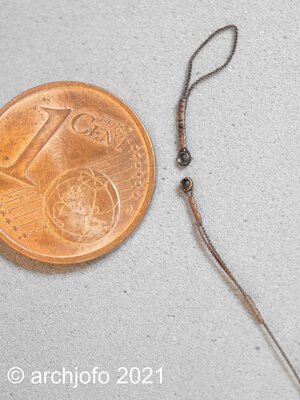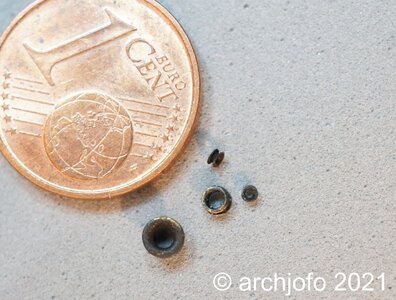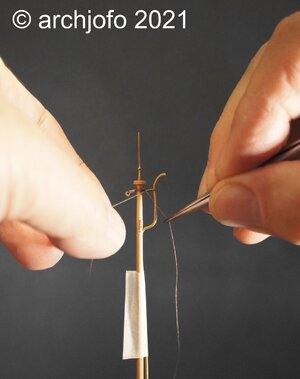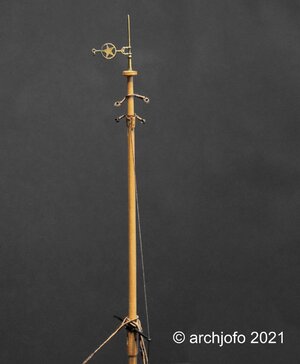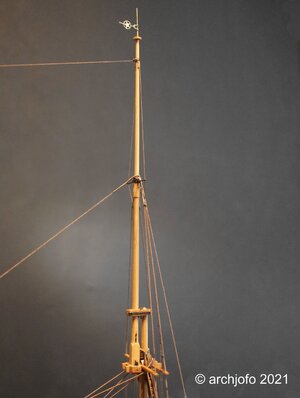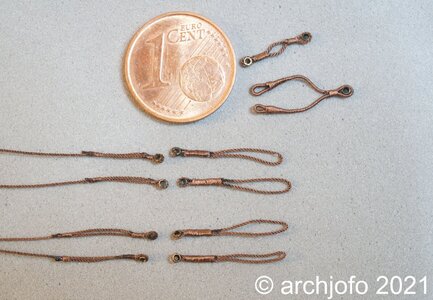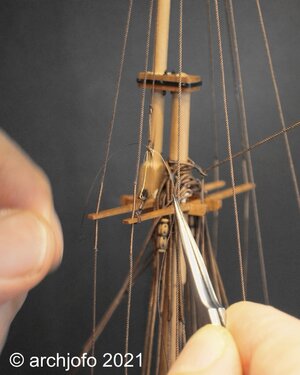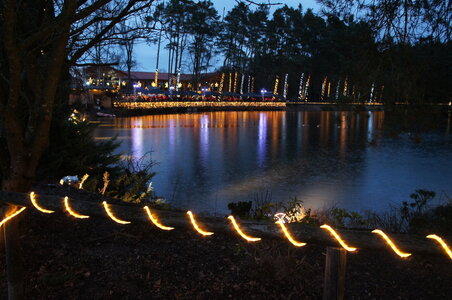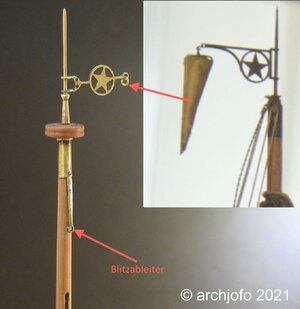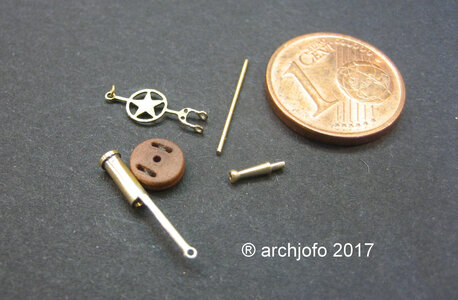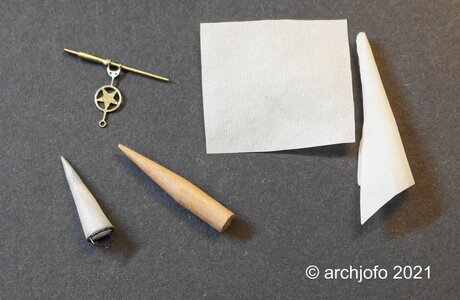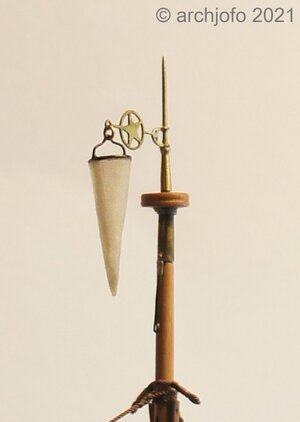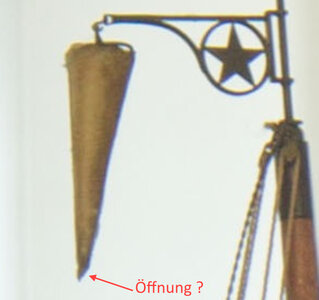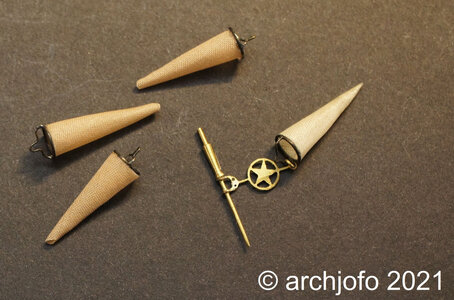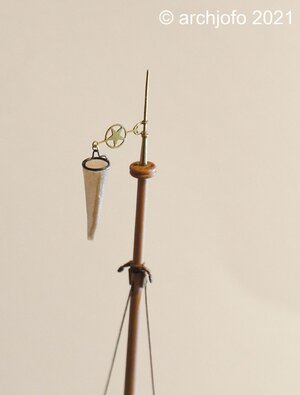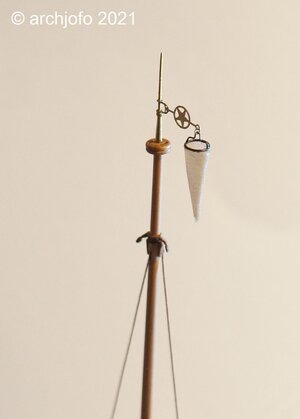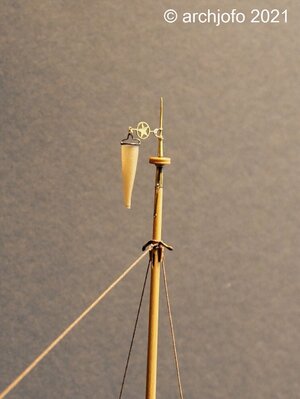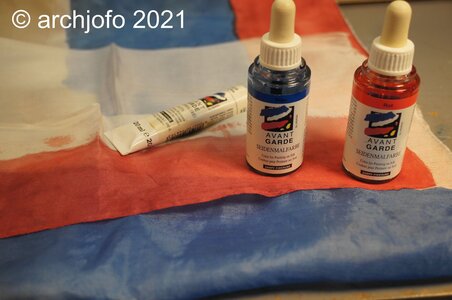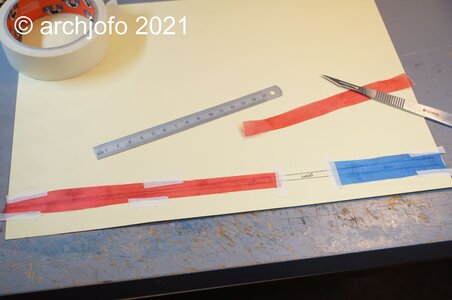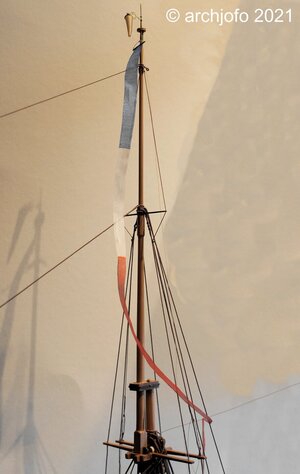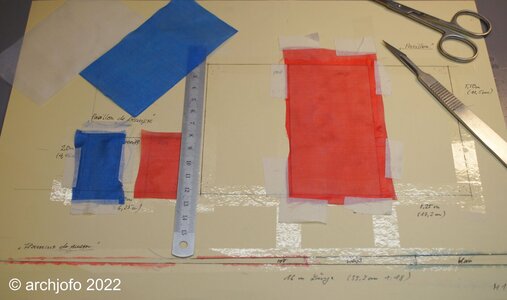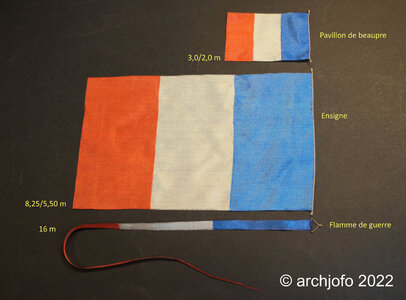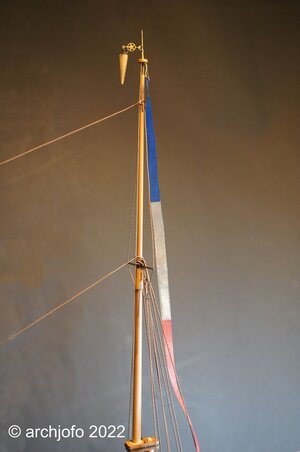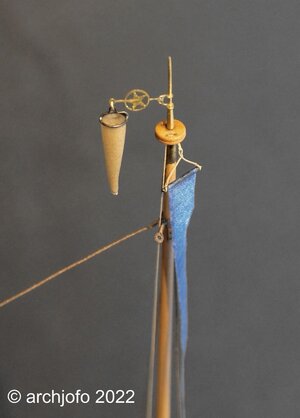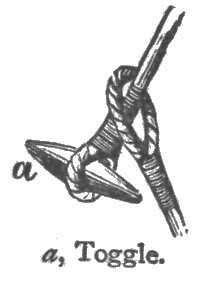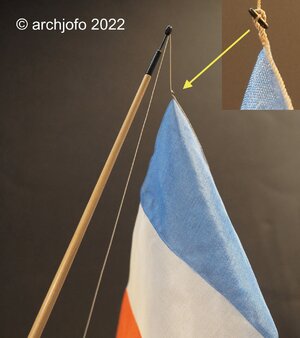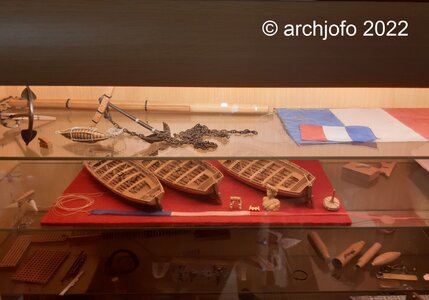- Joined
- Nov 10, 2019
- Messages
- 468
- Points
- 373

Standing rigging of the royal masts
Before I lash the boats, I would like to finish off the standing rigging as a whole.
To complete the standing rigging of the royal masts (shrouds, stays), a few more detailed clarifications and preparations were required.
As can be seen in the image section of the upper rigging of the original model, the royal masts are very filigree components. In the model, the royal masts are between a maximum of 2 to 3 mm thick.
In the picture I have the stays marked in yellow and the royal shrouds in red.
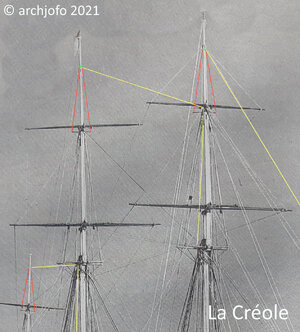
Source: Monograph by J. Boudriot, detail of the original model
Since neither the plan nor the description of the monograph contain any specific information on how the edition of the royal stays and shrouds should look in detail, I tried to find relevant information in relevant sources (literature, internet). Unfortunately, I was unable to get much information on this. Somehow the stays and shrouds have to be given a fixed position. Therefore, I orientated myself on the book by KLAUS SCHRAGE - RUNDHÖLZER, RUNDHÖLZER, RUNDHÖLZER, RUNDHÖLZER UND SEGEL page 92, Fig. 255. There you can see cleats on the royal masts. Accordingly, I tried to make these cleats as suitable as possible.
In the first step, the fastening of the cleats (model size 2.8 mm / 1.2 mm) had to be clarified. For this I needed tiny bolts, which I made from brass wire ø 0.25 mm using the method of a Russian model maker.
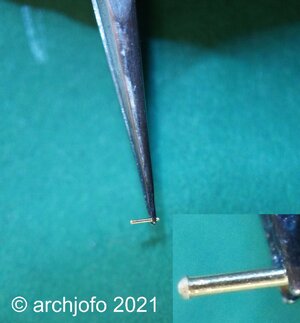
Furthermore, the ropes for the royal shrouds (mizzen mast ø 0.25 mm or fore mast and main mast ø 0.35 mm) and the stays (ø 0.25 mm or ø 0.40 mm) were made with the rope making machine manufactured.
There was also the question of how to manage the lifts for the royal yards. There was only one royal shroud per side. In this respect, the thimbles for the royal lifts could not be integrated. So I made a mast collar with two thimbles (ø1.2 mm).
A serving of these thin ropes was not given in the original either. The stays are placed with one eye on the cleats. The stays were brought down using thimbles and fixed with lanyard lashings. I still have to clarify these fastening details.
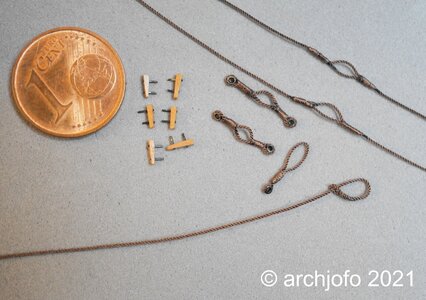
The location of the cleats on the royal masts was above the sheaves for the royal halliard, as can be seen in the following picture (mizzen royal mast).
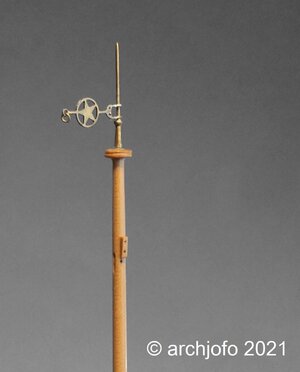
Sequel follows …
Before I lash the boats, I would like to finish off the standing rigging as a whole.
To complete the standing rigging of the royal masts (shrouds, stays), a few more detailed clarifications and preparations were required.
As can be seen in the image section of the upper rigging of the original model, the royal masts are very filigree components. In the model, the royal masts are between a maximum of 2 to 3 mm thick.
In the picture I have the stays marked in yellow and the royal shrouds in red.

Source: Monograph by J. Boudriot, detail of the original model
Since neither the plan nor the description of the monograph contain any specific information on how the edition of the royal stays and shrouds should look in detail, I tried to find relevant information in relevant sources (literature, internet). Unfortunately, I was unable to get much information on this. Somehow the stays and shrouds have to be given a fixed position. Therefore, I orientated myself on the book by KLAUS SCHRAGE - RUNDHÖLZER, RUNDHÖLZER, RUNDHÖLZER, RUNDHÖLZER UND SEGEL page 92, Fig. 255. There you can see cleats on the royal masts. Accordingly, I tried to make these cleats as suitable as possible.
In the first step, the fastening of the cleats (model size 2.8 mm / 1.2 mm) had to be clarified. For this I needed tiny bolts, which I made from brass wire ø 0.25 mm using the method of a Russian model maker.

Furthermore, the ropes for the royal shrouds (mizzen mast ø 0.25 mm or fore mast and main mast ø 0.35 mm) and the stays (ø 0.25 mm or ø 0.40 mm) were made with the rope making machine manufactured.
There was also the question of how to manage the lifts for the royal yards. There was only one royal shroud per side. In this respect, the thimbles for the royal lifts could not be integrated. So I made a mast collar with two thimbles (ø1.2 mm).
A serving of these thin ropes was not given in the original either. The stays are placed with one eye on the cleats. The stays were brought down using thimbles and fixed with lanyard lashings. I still have to clarify these fastening details.

The location of the cleats on the royal masts was above the sheaves for the royal halliard, as can be seen in the following picture (mizzen royal mast).

Sequel follows …


